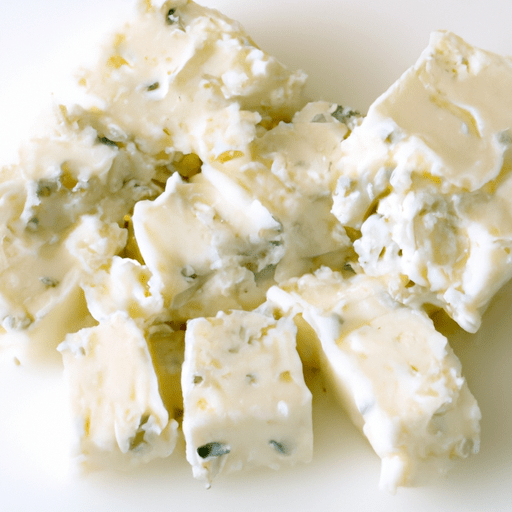Discovering the Classic and Creamy World of Bleu Cheese Dressing
When it comes to adding a burst of flavor to your salads, sandwiches, or even as a dip for your chicken wings, few things can compare to the tangy, rich taste of bleu cheese dressing. This classic dressing offers a perfect balance between creamy and sharp flavors, making it a staple condiment in many kitchens. In this post, we will explore the world of bleu cheese dressing, diving into its taste, common uses, nutritional value, and a few fascinating facts that will make you appreciate this delightful dressing even more.
Unleashing the Unique Flavors
Bleu cheese dressing boasts a distinctive taste that is both creamy and tangy. The creamy base, typically made with a combination of mayonnaise, sour cream, or buttermilk, provides a velvety texture that coats your palate. The real star of the show, however, is the bleu cheese. Known for its crumbly texture and blue veins, this cheese contributes a pungent and salty flavor, which adds a bold kick and complexity to the dressing. It’s worth noting that different varieties of bleu cheese, such as Roquefort, Gorgonzola, or Stilton, can alter the taste profile slightly, creating a range of options to suit various preferences.
Versatile and Irresistible Uses
Bleu cheese dressing possesses a remarkable versatility that extends far beyond your average salad. While it undoubtedly pairs well with greens, it also serves as an exceptional sauce for burgers, wraps, and even grilled meats. Drizzle it generously over buffalo chicken wings to amplify their savory appeal or use it as a dip for a platter of fresh veggies. The tangy and savory notes of the dressing elevate the flavors of many dishes, making it a go-to choice for chefs and home cooks alike.
Unveiling the Nutritional Profile
While bleu cheese dressing contributes to a delightful culinary experience, it is essential to take a closer look at its nutritional values. Although it contains higher levels of fat than, say, vinaigrette dressings, it offers a range of nutrients that should not be overlooked. Bleu cheese provides a good amount of protein, calcium, and vitamin B12. Additionally, it contains beneficial bacteria, such as those found in fermented foods, which can support a healthy gut microbiome. Moderation is key, as with any food, but incorporating bleu cheese dressing as part of a balanced diet can offer both flavor and nutrition.
A Fusion of History and Interesting Facts
The origins of bleu cheese itself can be traced back to ancient times, with evidence of cheese being deliberately left to mold found in some of history’s oldest cheese-making civilizations. As for bleu cheese dressing, it is believed to have originated in the United States during the early 20th century. Its popularity grew rapidly, thanks to the rise of salads as a mainstay in American cuisine. Today, bleu cheese dressing is widely enjoyed across the globe as a classic and versatile condiment.
Here are a couple of intriguing facts about bleu cheese dressing:
Despite its name, not all bleu cheese dressing is necessarily blue. It can range in color from white to pale yellow, depending on the specific type of bleu cheese used.
The mold responsible for the blue veins in bleu cheese is called Penicillium roqueforti. While this mold might raise eyebrows, it is different from the type that causes allergic reactions in some people.
So, whether you’re a fan of the exquisite pungency of bleu cheese or a curious food adventurer looking to explore new flavors, bleu cheese dressing is an essential addition to your culinary repertoire. Its creamy and tangy nature, paired with its myriad of uses, ensures it will continue to delight taste buds for many years to come.
Now go forth, and embrace the irresistible allure of bleu cheese dressing!
Origin: Bleu cheese dressing originates from the United States. It is a variation of the classic blue cheese, which dates back to the Middle Ages in Europe. However, the creation of a dressing specifically made with blue cheese is credited to Lawrence Frank, the co-founder of the famous “Lawry’s” restaurant in California during the 1930s.
Common Uses: Bleu cheese dressing is widely used as a versatile condiment and salad dressing. It is commonly paired with green salads, particularly wedge salads or salads containing strong flavors like bacon or red onions. It is also used as a dip for various snacks, such as buffalo wings, celery sticks, and carrot sticks. In addition, bleu cheese dressing can be utilized as a topping for burgers, sandwiches, or as a drizzle on grilled meats.
Nutritional Benefits: Bleu cheese dressing can provide several nutritional benefits. It is a good source of calcium, which is essential for strong bones and teeth. Additionally, it contains protein, vitamin A, and vitamin D. However, it is important to note that bleu cheese dressing is high in fat and calories, so it should be consumed in moderation.
Unique Properties: One unique aspect of bleu cheese dressing is its distinctive flavor profile. The creamy texture and tangy taste come from the aging process of the blue cheese. The dressing’s characteristic blue or green specks are the result of mold (Penicillium roqueforti) used during the cheese production.
Historical Significance: Bleu cheese has a rich history and has been enjoyed for centuries. It was said to have been accidentally discovered in a cave in France, where the mold grew naturally on the cheese. Roquefort, one of the most well-known types of blue cheese, has been produced in the village of Roquefort-sur-Soulzon since the 11th century. Throughout time, the popularity of bleu cheese led to the creation of bleu cheese dressing, which has become a staple in American cuisine.




Use the share button below if you liked it.
It makes me smile, when I see it.